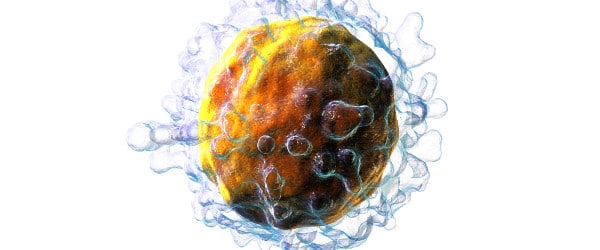In research, choosing a model system is like choosing a partner – you want it to be a perfect fit. If you are attempting to solve problems such as finding unknown proteins in known processes, investigating unknown functions of known proteins or correlating cell biology to a function for which you want a relatively simple eukaryotic multicellular system, then C. elegans comes top of the list.
Why C. elegans Are an Awesome Model System
Here are some very cool and interesting facts about C. elegans that can be particularly useful for addressing research problems and make them a truly amazing model system:
- C. elegans are eutelic. That is, they have a fixed, genetically determined number of cells, 959 in hermaphrodites and 1031 in males. Additionally, the lineages of cells can be precisely tracked. Such information is especially useful for investigating problems in developmental biology or understanding the role of specific cells (for e.g. neurons in a circuit) in the organism.
- You can simply feed animals multiple reagents. This includes RNAi to knock down genes or dyes to track oxidative stress. This is especially advantageous as feeding is a far simpler technique compared to genetically expressing indicators or microinjecting transgenes carrying gene sequence for expression of desired indicator proteins.
- They can self-replicate. Yes! C. elegans are hermaphrodites, so they don’t need males to replicate. This does not mean that no males exist in the population, but they are rather rare, just 0.02% of the whole population. Advantage: severe mutations can be maintained homozygously in the population without worrying much about problems they might cause in mating and hence their propagation.
- A single healthy animal can lay 300-350 progenies in its lifetime. This is a significantly large brood size to get the genetic ratios right and you can get these populations from one 60mm petri plate. Therefore, maintaining large populations of worms for experiments becomes both cost and time effective.
- 40% of genes known to be associated with human diseases have orthologs in the C. elegans genome. C. elegans is thus a viable system to study the effect of such genes on various cellular and molecular pathways. In addition, simplicity of the model system, and advantages like small size, large brood size and short generation time make C. elegans an amenable system for therapeutic screening.
- They are transparent organisms. You can literally see inside their bodies and, better still, you can easily track fluorescent proteins inside the cells. Live, in action! Basically, you can spend your whole research journey without ever dissecting a single worm and still know what is going on inside it. C. elegans as a model system thus provides great advantage in ease and simplicity of experimentation.
- You can freeze the worms. They will revive from the freeze just fine – moving around as if nothing happened. This possibility of freezing C. elegans is an excellent time saver. You can take a break of as long as 25 years and revive the strains to start where you left off (probably with a lot more grey hair on your head).
- They are genetically accessible. Due to large brood size, short life span (~3 days) and a range of behavioural phenotypes, C. elegans are appropriate for genetic screens. Another big advantage is that worms self-fertilize, hence mutations can be maintained across generations. In case of lethal mutants, the mutations can be effectively balanced with a battery of balancers available. Moreover, worms mostly have single copies of genes in their genome, so no question of redundancy. More recently, easy and targeted genome editing methods like mosSCI, TALEN and CRISPR/Cas9 have been developed which make it easier to address specific problems. All in all, C. elegans is an easy system for genetic manipulation.
- There are awesome resources available for C. elegans. If you are starting worm work, there are some great open resources available online that are constantly maintained and updated to provide the most relevant information. Here is a selected list:
- https://www.wormbase.org/
- https://www.wormbook.org/
- https://www.wormatlas.org/
- https://www.cbs.umn.edu/research/resources/cgc
- https://wormbehavior.mrc-lmb.cam.ac.uk/
In conclusion, C. elegans provide a simple system to understand complex processes, the same reason for which Sydney Brenner originally isolated and started working on C. elegans. I hope these reasons allow you to see the benefits of C. elegans as a model system.






